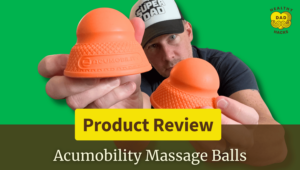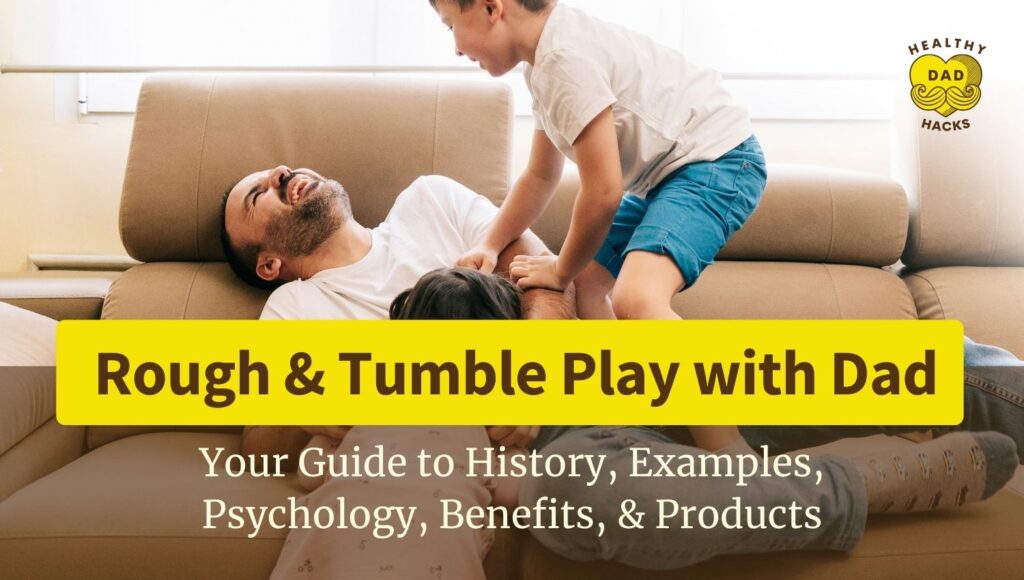Amazon Affiliate Disclaimer
This content may contain affiliate links, which means that if you click on one of the product links, I may receive a small commission to help purchase more Dad-friendly products to do more helpful reviews! As an Amazon Associate I earn from qualifying purchases.
I absolutely love wrestling with my kids.
Maybe it’s because I grew up watching WWF with my brother, cousins, and uncles. Hulk Hogan, Ultimate Warrior, Macho Man, Andre the Giant — ah, the golden years of wrestling.
If you know, you know.
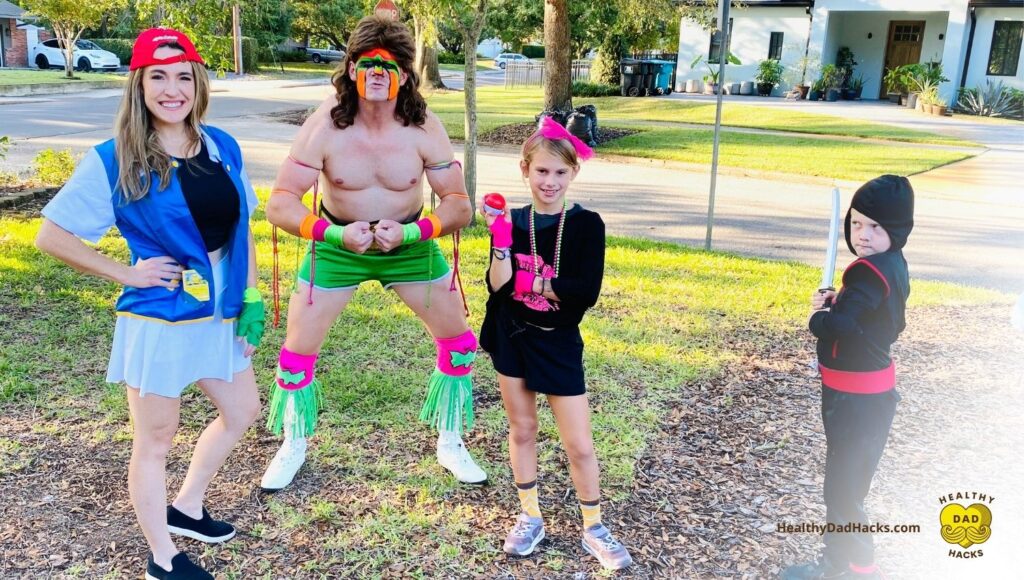
Intro to Rough and Tumble Play
I’ve always felt my kids enjoyed rough and tumble play. Like, really enjoyed it.
Their eyes always light up, their belly laughs are plentiful, and they get super creative to “beat Dad”. As they’ve gotten older, I think they’ve come to realize their success rate goes up if they tag team me. Good for them, right?
I’ve always had a hunch they’ve gotten more out of it than me. And you know what? I was right! When kids engage in wrestling and roughhousing with their dads, it can have numerous positive effects on their development — and not just physically!
Now that’s a win/win.
Ooooooooooooh, yea!Macho Man Randy Savage
In this guide, I’ll explore these benefits of rough and tumble play with Dad, and back it up with the psychology behind it all. I’ll also share a quick history along with my own tips and favorite products to aid in rough and tumble play. But, let’s first lay the groundwork here and define “rough and tumble”.
Rough and Tumble Play Definition
So, what exactly is rough and tumble play?
I know my Ultimate Warrior reference above probably created some imagery for you when it comes to rough and tumble. Let’s course correct.
I’ve seen a few definitions of rough and tumble, but I like these two the best.
1. The Play and Playground Encyclopedia defines “rough and tumble play” as:
Physically vigorous behaviors, such as chase and play fighting, that are accompanied by positive feelings between the players.
2. Researcher Malinda J. Colwell defines it as:
Playful contact or agonistic behavior that is performed in a playful mode and that is social in nature and characterized by positive emotion.
I think the key word in both of these definitions is “positive”. Remember, this is all about fun folks — not bullying, hurting, intimidating, or scaring your kids. I know y’all know better, but I just had to say it.
History of Rough & Tumble Play
Rough and tumble play is a type of physical play that has likely been a part of human culture throughout history.
In ancient civilizations, physical play was often intertwined with training for hunting, warfare, and physical skills necessary for survival. Young individuals would engage in activities that simulated combat, wrestling, or mock battles to develop strength, coordination, and combat skills.
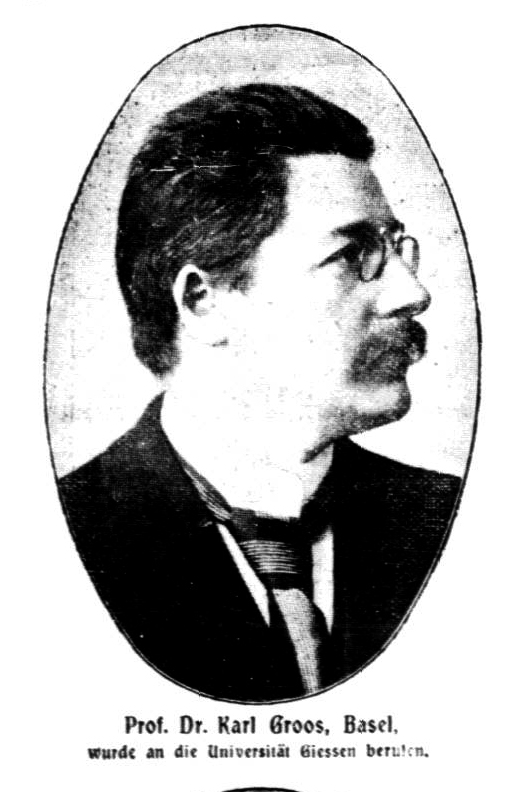
In more recent history, rough and tumble play has been observed in different cultures around the world. For example, Native American cultures had traditional games involving physical contact and wrestling, such as the Native American stickball game, which was a precursor to modern lacrosse.
In the late 1800s, anthropologist Karl Groos was the first to name this type of play in his book The Play of Animals.
Over time, there has been a growing understanding of the benefits of rough and tumble play in children’s development.
Types/Examples of Rough & Tumble Play
Here are the various types of rough and tumble play for kids from 1 to 12 years old.
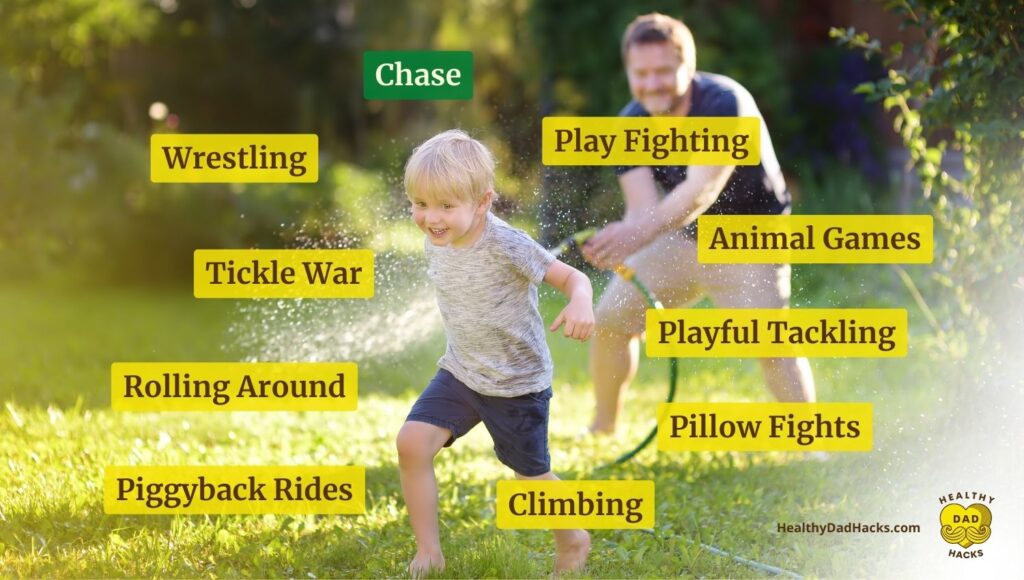
Sometimes, you can mix and match these examples and develop some odd (but fun!) games. Organic rough and tumble is just the best.
- Wrestling
- Climbing (not a tree, but climbing on Dad)
- Rolling Around
- Play Fighting
- Tickle war (tread lightly on this one, too much could be harmful)
- Animal Games (growling, pretending to eat them, etc.)
- Chase
- Pillow Fights
- Playful Tackling
- Piggyback rides (horse, dragon, tiger, whatever — let ’em ride!)
- Playful Roughhousing (a fancy word for combining multiple types)
My faves are wrestling (duh), play fighting, tickle war, animal games, playful tackling, and piggyback rides! My daughter has always loved piggyback rides, especially when the horse “goes crazy” and she has to hang on.
YOU MAY LOVE THIS
Psychology behind Rough & Tumble Play
Research shows, and yes I linked studies below, there are psychological aspects of rough and tumble play that contribute to a child’s overall development including their:
- emotional intelligence
- social skills
- self-confidence
- cognitive abilities
Pretty cool, right? Let’s dig into these benefits more below.
Benefits of Rough & Tumble Play with Dad
Next time your heart is racing, start sweating a bit, and your body aches for a break — remember that your kids are radically benefiting from your rough and tumble play. Hang in there and keep playing as long as you can!

Here are the 7 benefits of rough and tumble play, backed by research. Note: some of these studies are not linked, I’m working on finding the best linkable source for those scientific studies.
1. Bonding and Emotional Connection
Physical play between you and your children helps build a strong emotional bond, fostering trust, security, and a sense of belonging. It creates lasting memories and strengthens the parent-child relationship.
Study
Tucker, S., & Maras, D. (2008)
2. Physical Fitness and Motor Skills
Wrestling and roughhousing promote physical activity and exercise, contributing to overall fitness. These activities require movement, strength, coordination, balance, and agility, helping children develop their motor skills and body awareness.
Study
Pellegrini, A.D., & Smith, P.K. (1998)
3. Emotional Regulation and Self-Control
Through playful roughhousing, kids learn to manage their emotions, control their impulses, and regulate their behavior. They understand the importance of boundaries, respect, and consent, which are crucial social and emotional skills.
Study
Pellis, S.M., & Pellis, V.C. (2007)
4. Problem-Solving and Decision-Making
Wrestling and roughhousing often involve making quick decisions and strategizing. Children learn to think on their feet, assess situations, and adapt their actions accordingly. This can enhance their problem-solving abilities and decision-making skills.
Study
Schwebel, D.C., & Plumert, J.M. (1999)
5. Confidence and Resilience
Successfully engaging in physical play with their fathers can boost children’s self-confidence and self-esteem. They gain a sense of accomplishment, overcoming challenges and testing their limits. This can foster resilience and a positive mindset.
6. Communication and Language Skills
Physical play encourages verbal and non-verbal communication between fathers and children. Kids learn to express their needs, emotions, and boundaries effectively. They improve their vocabulary, language skills, and non-verbal cues during these interactions.
Study
Copeland, K.A., Rodriquez, E.M., Barnett, M.A., & Neal, M.R. (2013)
7. Stress Relief and Emotional Well-being
Playful wrestling and roughhousing can serve as stress-relief activities for both dads and kids. It helps release pent-up energy and tension, promoting emotional well-being and relaxation. I can REALLY attest to this one! 🙂
Study
Tucker, S., & Maras, D. (2008)
Other Pros
Now that I’ve covered the science, psychology, and sociology — let’s get pragmatic.
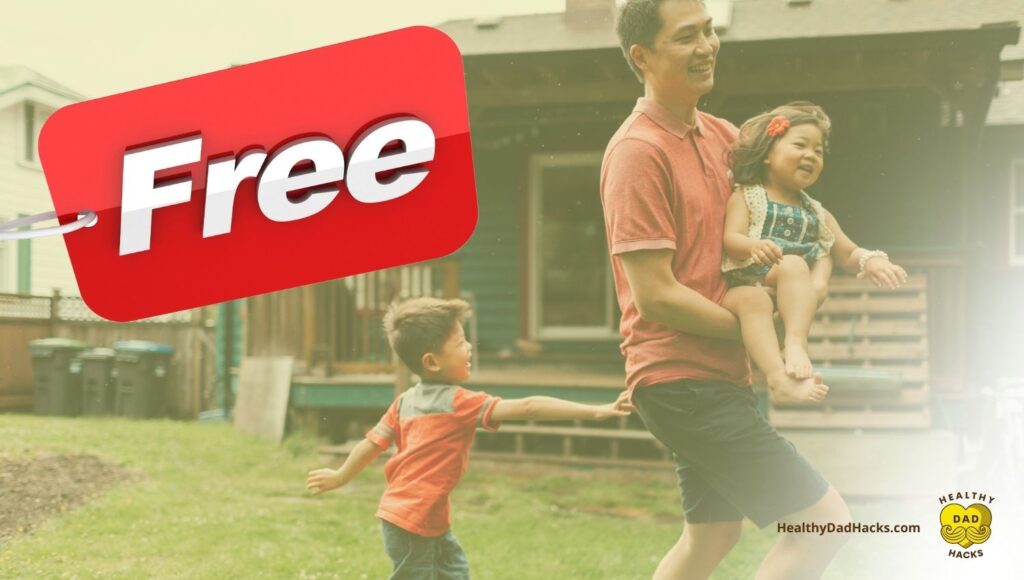
Here are some other ways that rough & tumble play benefits the entire family:
- It’s FREE. Nothing to buy, just dad vs kids, body on body — who needs toys?
- It’s spontaneous. Spontaneity is not just for date nights!
- It squashes boredom like nothing else. One second they’re bored, then they’re laughing their butts off.
Tips for Rough & Tumble Play
Remember, it’s crucial to ensure the safety of your kids during these activities. You should establish clear rules, monitor the intensity of play, and create a safe environment to prevent accidents or injuries.
Here are a few tips from my own experience with two kids:
- No physically harmful tactics. There’s no scratching, biting, or non-playful punching/kicking.
- “Please Stop.” Saying “Please Stop” is the ultimate diffuser, it ends play immediately. Now, this can get tricky because kids learn to abuse its power if they feel they’re losing — but give them the benefit of the doubt until you can read your kids well.
- Pause. If something falls over (e.g. lamp, picture frame, your dad coffee mug) during rough play, or heaven forbid, breaks — we pause.
- Water break. Speaking of pause, use it often to refuel with water!
- Crying. If there are tears, we stop playing and talk about what happened to ensure they still feel safe and want to continue.
Also, I highly recommend dads investing into self care, regularly, to keep you fresh for rough and tumble play. You’ll need it!
Recommended Products
Listen, I know I just mentioned that rough and tumble is free. I was pretty emphatic about it. But, if you want some ideas for props, gear, and fun stuff to aid and support rough and tumble play with kids, here are 4 types of products.
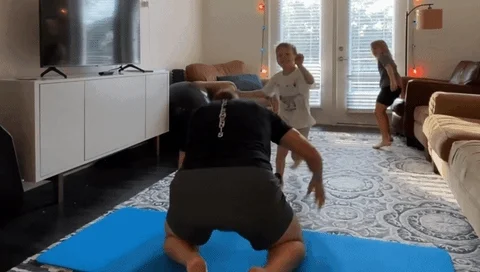
- Playful Furniture — awesome for wrestling, building fortes, platforms, jumping on, and tumbling.
- Protective Gear — knee and elbow pads, helmets, padded clothing (for them, not you!)
- Soft Play Equipment — foam blocks, crash pads, inflatable play structures.
- Sports Equipment — boxing bags, blocking pads, yoga mats, gymnastics pads.
- Misc — If you’re going to stick with good ol’ fashioned rugs, ensure the rugs don’t slide with these rug grippers.
Below are some of my favorite products you might want to add to your Dad repertoire.
1. Playful Furniture
Do your wife a favor, don’t use the couch. Or your bed. Get some durable playful furniture such as beanbags and/or a modular play couch.
2 specific recommendations:
- CordaRoy’s Bean Bag Chair (converts into a bed and/or crash pad!) See my full review of the CordaRoy’s Bean Bag Chair.
- The Nugget®. The original play couch, this modular play furniture has held up for years! Note: not sold on Amazon, but I’ve listed a similar product below.
2. Protective Gear
I’ll be honest, I’ve never bought or needed protective gear. I’ve just always used lots of pillows. 🙂 However, here are some ideas:
3. Soft Play Equipment
Crash pads are awesome!
4. Sports Equipment
Things can get wildly creative when you have sports equipment.
Dad’s Final Thoughts
My daughter (currently 8) is nearing the end of her rough and tumble days, which makes me sad when I think about it. Though, she does often say, “Hey Dad, can we wrestle?” and my answer is almost always “Let’s do it!” She was my first child, and we’ve dabbled in various physical play that has definitely built a stronger daddy/daughter bond.
My son (currently 6) has many years left of rough and tumble, and you can bet your lucky stars that I’m taking full advantage of it. He really enjoys play fighting (ninja kicking/punching) and various pretend animal games. I know it’s benefiting our relationship and it’s such a fun and simple way to connect.
If you have kiddos under the age of 12, use rough and tumble play for as long and as often as you can. You’ll never get these days back, so sprint into every opportunity like the Ultimate Warrior.
Get NEW Products, Hacks, and Habits in your inbox at the end of each month. See sample!
Nothing more, nothing less.
First email will be at the end of current month!
You got this, Dad!
Are you a busy Dad? I'll help you cut through the noise to find what’s actually worth buying and doing, so you can improve your health, home, and family life without trial-and-error.


About Eric
Eric Sharp is the founder of Healthy Dad Hacks. He's married to the love of his life (Sarah) and proud Dad of a blended family (Hazel, Roman, & Dean). When not thinking about Dadhood, he enjoys; CrossFit, entrepreneurship, eating steak, growing his Michael Jordan card collection, 90s music, and fancy sneakers.






